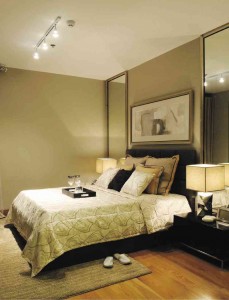What you need to know when viewing a model unit
MANILA, Philippines—We’ve been having a building boom! And today, I just read in the papers of a projected GDP growth of 5 percent. That’s good news for people in my industry who are happily conceptualizing, designing and delivering architecture and interior spaces. We have largely to thank the residential market, where the demand for housing—whether it be condominiums or single-detached homes—seems boundless. With this comes a full array of residential developments and their marketing tools, one of which is their model units.
Because the market has been competitive, developers want their units to be aspirational and sell not merely a space but a certain lifestyle as well, a lifestyle that a buyer has been longing for or dreaming of. Model units compete as the “dream come true” for the residential unit buyer. But dreams can shatter when there is a miscommunication between buyers and sellers, or when the sellers promise more than they will actually deliver. Sometimes, it’s also the buyer that has not done his due diligence and has false expectations.
Things to investigate
For happier endings, here are a few things to investigate when viewing a model unit:
Find out if what you are viewing is an “as-delivered” unit, or an “upgrade” unit. An “as-delivered” unit is one where the partitions, floor, wall and ceiling finishes, ceiling design and lighting fixtures, kitchen cabinetry and closets, are exactly what a buyer would get upon receiving his unit. For this unit, an interior designer is tasked to fix up the unit with loose items only (furniture, window treatment, carpets, decorative lighting, accessories), and work around the configuration, materials and colors the actual unit will have.
The latter would have modifications that deviate from what the developer will actually deliver. Some partitions may have been relocated, ceilings modified, and materials and finishes upgraded to support the interior designer’s concept for the unit. Many viewers misinterpret the upgrades as deliverables, and this is where the confusion (and sometimes the disappointment) comes in. Developers usually put notices of what are included or what are not. However, a salesperson may promise you the world in order to make a sale.
Verify if appliances are included. Some units are sold without any appliances, in which case it is important for you to sleuth on a few things:
—Avoid mistakes when purchasing your cooker. Check if your range or oven can be an LPG-fired one. Most developers disallow LPG tanks for valid reasons—the risk of gas explosions and the risk of damage to public spaces due to the movement of these heavy tanks around the building. Newer developments though, feature centralized LPG lines, in which case the main LPG tanks is located somewhere within the building and is piped to your unit just as water is. It is a system that is common in many parts of the world.
—Verify if your air-conditioner is a window-type or a split-type unit. The latter has two components: the indoor unit (or “fan coil unit” and the outdoor unit or “condenser.” Most developers will only provide you the space for both the indoor and outdoor units and will tell you where you can run the pipes that will connect the two. Others would already have installed the pipes and predetermined the location of the indoor unit. Newer development will have the air-conditioning systems fully delivered and ready for use, saving you the trouble of buying them and having them installed.
—Inspect the bathrooms for water heaters. Most units come with one heater per bathroom (which is the most economical system for the homeowner). Sometimes, these are not shown in the model units, or could be covered up by some furnishing. Some developers locate these as an afterthought, and you may find yourself with an unsightly water heater with exposed ugly pipe connections.
—Check the door openings. Most model units do not have doors installed. Not intended to deceive their buyers, but rather it just allows for easier movement around the unit without having to open the doors all the time. Check that door leaves, if they were installed, would not blocked by fixed items like closets or in the case of bathrooms, the sink or water closet.
—Ask to see the windows. More often than not, they will be concealed behind some decorative treatment: blinds, or curtains. Some buyers, in their excitement, overlook this, and realize what sort of window openings their unit has only when it is turned over to them. Also check for the operability of the panels, as you would like most, if not all, to be operable to let air in and avoid full-time use of your air-conditioner.
—Verify if the ceiling is a dropped ceiling or if it is the underside of the floor slab. This will give you an idea of the true ceiling heights you will be able to achieve, should you wish to play around with your own ceilings. Most developers deliver the units with the real slab heights, but a few others don’t. The perception of space is not merely of width and depth, but of height as well. A higher ceiling will always give you a more spacious and airy feel.
Before you sign that contract, read the fine print carefully and understand what is actually the deliverable product, despite what your sales agent tells you. A property investment, whether for speculative reasons or for actual use, comes with some very real dreams and aspirations, so don’t forget to do your homework. Happy dreaming, and happy hunting!
Contact the author through designdimensions@abi.ph or through our Asuncion Berenguer Facebook account.

